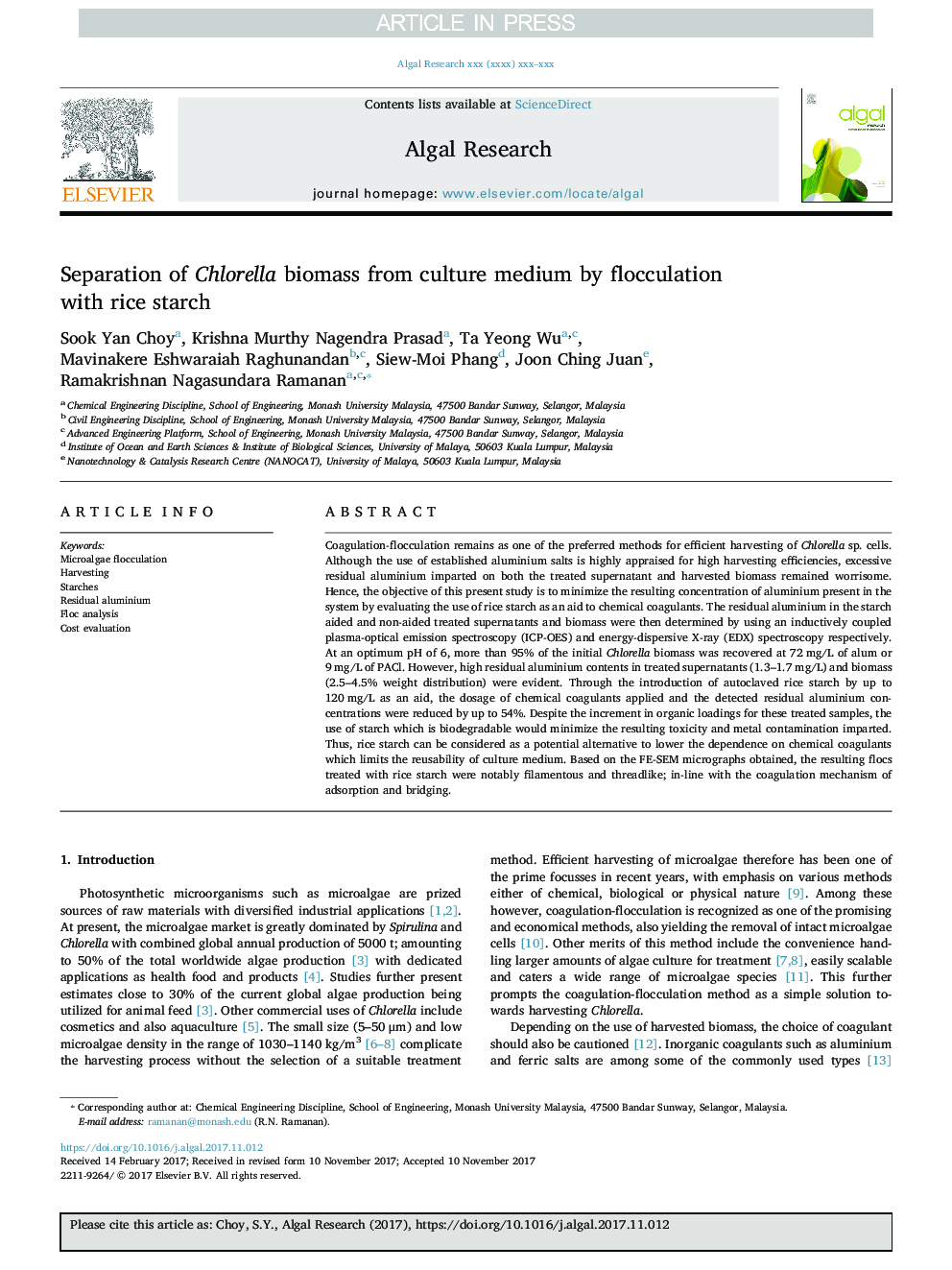| Article ID | Journal | Published Year | Pages | File Type |
|---|---|---|---|---|
| 8086151 | Algal Research | 2018 | 11 Pages |
Abstract
Coagulation-flocculation remains as one of the preferred methods for efficient harvesting of Chlorella sp. cells. Although the use of established aluminium salts is highly appraised for high harvesting efficiencies, excessive residual aluminium imparted on both the treated supernatant and harvested biomass remained worrisome. Hence, the objective of this present study is to minimize the resulting concentration of aluminium present in the system by evaluating the use of rice starch as an aid to chemical coagulants. The residual aluminium in the starch aided and non-aided treated supernatants and biomass were then determined by using an inductively coupled plasma-optical emission spectroscopy (ICP-OES) and energy-dispersive X-ray (EDX) spectroscopy respectively. At an optimum pH of 6, more than 95% of the initial Chlorella biomass was recovered at 72Â mg/L of alum or 9Â mg/L of PACl. However, high residual aluminium contents in treated supernatants (1.3-1.7Â mg/L) and biomass (2.5-4.5% weight distribution) were evident. Through the introduction of autoclaved rice starch by up to 120Â mg/L as an aid, the dosage of chemical coagulants applied and the detected residual aluminium concentrations were reduced by up to 54%. Despite the increment in organic loadings for these treated samples, the use of starch which is biodegradable would minimize the resulting toxicity and metal contamination imparted. Thus, rice starch can be considered as a potential alternative to lower the dependence on chemical coagulants which limits the reusability of culture medium. Based on the FE-SEM micrographs obtained, the resulting flocs treated with rice starch were notably filamentous and threadlike; in-line with the coagulation mechanism of adsorption and bridging.
Related Topics
Physical Sciences and Engineering
Energy
Renewable Energy, Sustainability and the Environment
Authors
Sook Yan Choy, Krishna Murthy Nagendra Prasad, Ta Yeong Wu, Mavinakere Eshwaraiah Raghunandan, Siew-Moi Phang, Joon Ching Juan, Ramakrishnan Nagasundara Ramanan,
